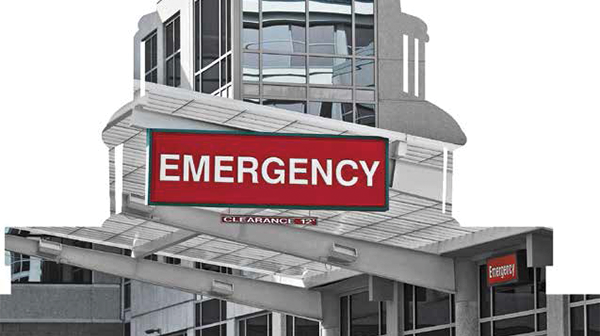
National Security Council staff director for medical preparedness policy, Richard Hunt, MD, FACEP, discusses the value of emergency medicine training in the ED and on the national stage
Explore This Issue
ACEP Now: Vol 33 – No 03 – March 2014Emergency medicine’s rigorous training and focus on patients’ needs has produced many leaders, both within and outside of the specialty—including the current director for medical preparedness policy for the White House’s National Security Council Staff, Richard Hunt, MD, FACEP. Former federal administrator of the National Highway Traffic Safety Administration and mentor Ricardo Martinez, MD, FACEP, now chief medical officer and vice president of North Highland Worldwide Consulting in Atlanta, recently sat down with Dr. Hunt to discuss the value of emergency medicine training—both in the emergency department and on the national stage. Here are some highlights from their discussion.
RM: Dr. Hunt and I go back decades based on our common interest in emergency medicine and in EMS and injury prevention. It’s been a real joy to watch him not only grow as a professional but really contribute to how we practice today and—based on his latest appointment—how we’ll practice in the future. With that, Rick, tell us about your new job.
RH: The title that I currently have is director for medical preparedness policy for the National Security Council Staff at the White House. The National Security Council Staff supports the National Security Council. In this domain, I work with a team of people that spans the whole spectrum of preparedness and response, addressing all hazards, both manmade and natural. We have an opportunity to interact with all federal departments and agencies as well as organizations and individuals outside of government. It’s really humbling when you walk down the steps of the Eisenhower Executive Office Building where I work and you’re 30 steps away from the West Wing.
RM: It’s important that there’s been recognition that emergency physicians should be involved in this process—and, in fact, leading parts of it. Are you finding that there’s a cadre of emergency physicians that you can work with to develop policy, identify problems, and find workable solutions?
One thing our specialty should be proud of is that the chair I sit in is the same seat that two other emergency physicians have sat in: Drs. Kathy Brinsfield and David Marcozzi. –Richard Hunt, MD, FACEP
RH: One thing our specialty should be proud of is that the chair I sit in is the same seat that two other emergency physicians have sat in: Drs. Kathy Brinsfield and David Marcozzi. Dr. Marcozzi was here for four years. Beyond that, we have extraordinary leadership, both past and present, in the federal government, such as Drs. Martinez, Jeff Runge, and John Krohmer, and Past Presidents of ACEP who have held federal roles, as well. There are also leaders in emergency medicine who hold positions on the state and community level. It’s a magical thing for any of us to call any emergency department in the nation at 3 in the morning and say, “I’m an emergency physician from X, and I need your help with this.” People in our discipline really take care of each other. The ability to reach back and have thoughtful problem solvers thinking through hard things with you—every day I’m grateful to be an emergency physician to be able to do that.
Pages: 1 2 3 4 | Single Page





No Responses to “Emergency Medicine in the White House”